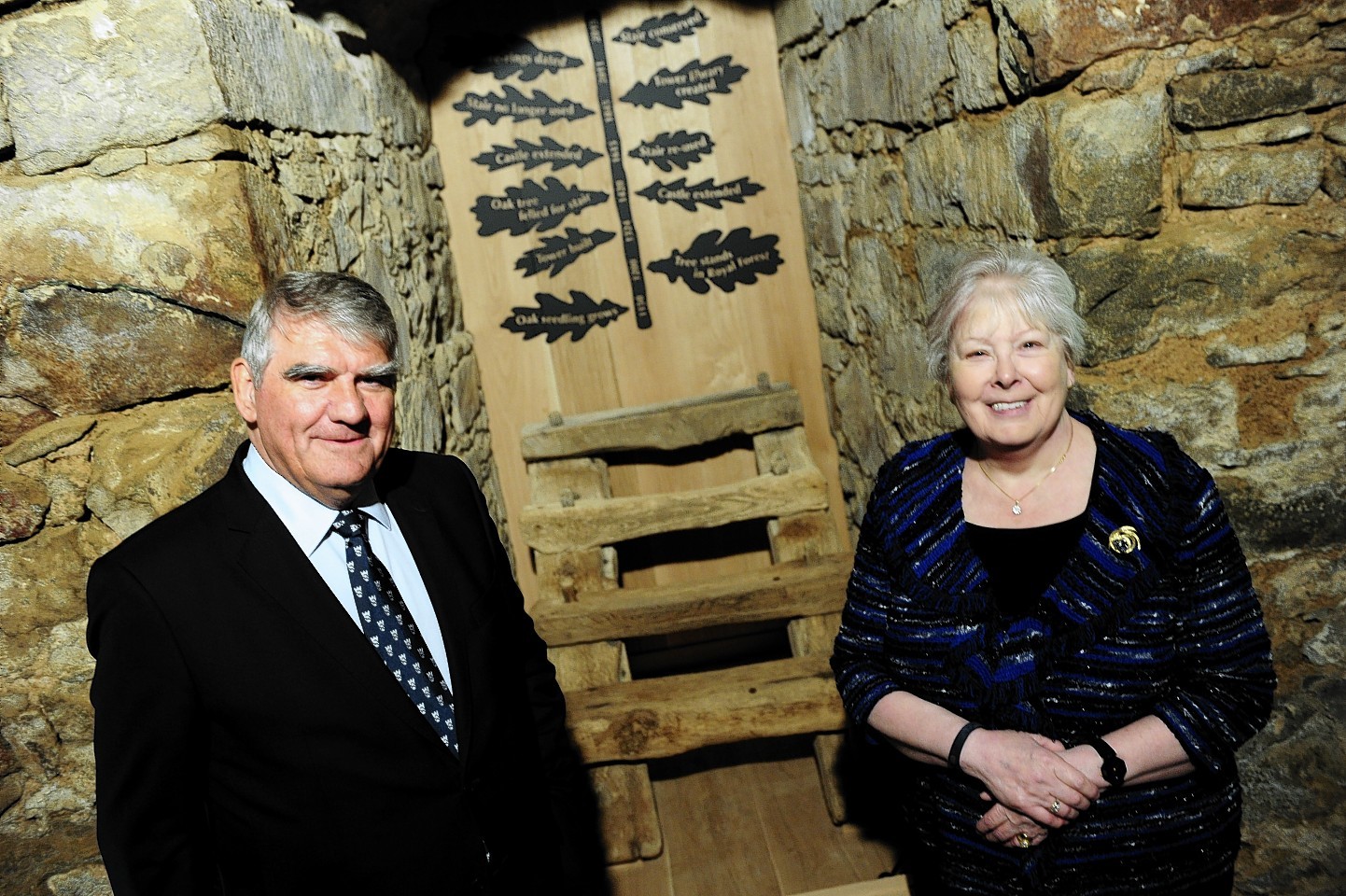A crucial section of an Aberdeenshire castle has been brought into the light for the first time in centuries, bringing with it more than 800 years of history.
No mere slab of wood, the staircase to the Drum Castle cellar can be traced back to the earliest days of the 13th century building.
And before being turned into timber, the steps started life as a proud oak tree, planted in the Royal Forest of Drum in 1150.
Now the hardy piece of woodwork – abandoned in the cellar of the castle tower for more than 150 years – has finally been recognised as a vital part of Drum’s heritage and put on display to visitors following renovations by a team of National Trust for Scotland (NTS) archaeologists.
Shannon Fraser, regional archaeologist for the NTS, said: “The timber the oak from the staircase came from was felled sometime between 1400 and 1440 and it may originally have formed a roof of one of the buildings.
“The tower itself was built in the 1320s and the stair potentially was made in 1420-40, so it has been around almost as long as Drum.
“When it finally went out of use it was so heavy it took four people to move it. They didn’t want to move it far because it would have been too much hassle and that is why it has been kicking around since the 1860s.
“The wood was almost definitely from the Royal forest of Drum which surrounded us effectively from Banchory through to Drum along the banks of the Dee. It just shows you how wonderful oak is.”
NTS conservator, Fiona Butterfield, said the staircase had succeeded in adapting to the temperamental north-east climate throughout the centuries, and that this explained its longevity.
She said: “We are very fortunate in the tower – the temperature and humidity are very constant. There is no heating, so it stabilised to these conditions.”
The tower of Drum Castle was built in the 1200s. The main building itself is the ancestral seat of the Clan Irvine – which backed the Stuarts during the Jacobite rebellions.
Drum Castle manager, Alison Burke, said the old wooden staircase was as much a part of Drum’s history as all the people who had paced up and down its steps over the centuries.
She added: “What is moving is that it is a stair that goes back to 1150 and is still part of the castle today. Think what it has stood through and all the things the ladder has witnessed.”
Stair restoration
The restoration of the stairs was made possible by £25,000 of funding from the NTS Foundation USA.
Chairwoman of the group, Helen Sayles, a Scots-American living in Concord, Massachusetts, attended the grand opening of the castle’s latest exhibit to see what the group’s support had helped to achieve.
She said: “We raise funds in the US to send to Scotland for preservation of the National Trust’s treasures. We have raised over £7million since we have been in existence.
“This was important to me as my father was from Aberdeen so Aberdeenshire projects are close to my heart. I came from Ayrshire, so Burns projects are too.”
The unveiling was also attended by NTS chairman, Sir Moir Lockhead.
